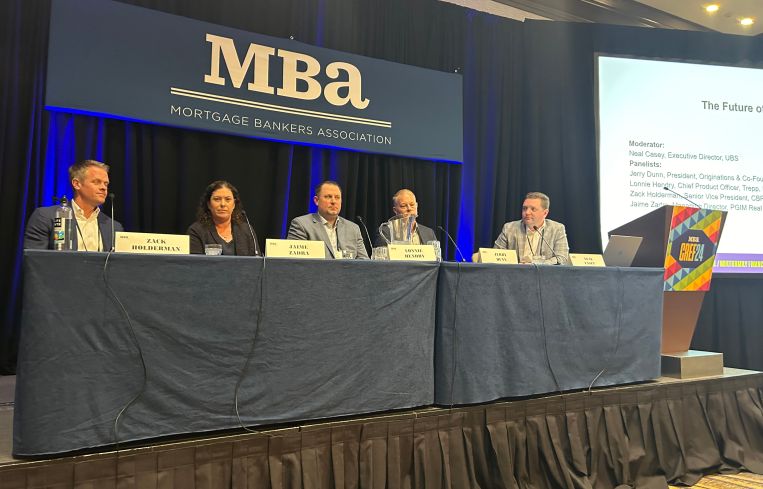MBA CREF 2024: Office Sector Needs Reset, but Conversions Won’t Be a Savior
By Andrew Coen February 13, 2024 11:46 am
reprints
With the prospect of successful office conversions likely a fantasy for many properties, a full-blown reconstruction of the sector at far lower valuation points is likely necessary for sponsors and financiers to succeed in the current hybrid working climate.
This was the sentiment of commercial real estate finance experts at Monday’s Mortgage Bankers Association Commercial/Multifamily Finance Convention and Expo ( known as MBA CREF) given the heavy barriers to converting a number of office properties.
“I think we have to have a reset in basis and the sooner we can get to that point, the sooner we get to office versions 2.0 or 3.0,” Lonnie Hendry, chief product officer at Trepp, said during the MBA CREF session “The Future of the Office Sector” at the Manchester Grand Hyatt San Diego. “It creates an opportunity for people that can come in and buy an office building in San Francisco trading for $1,000 per square foot three years ago for $250.”
Hendry noted that office conversions to multifamily or other uses are “cost prohibitive” and can happen only if municipalities can form public-private partnerships that can help the projects pencil with tax relief or government grants.
Jerry Dunn, co-founder and president of originations at A10 Capital, said he has gotten many requests for office-to-residential conversions, but making the financing work with many buildings changing floor plates has made them a challenge to execute. He noted that a number of suburban office assets in the country are now in the process of being converted to self-storage, but funding those projects also will be difficult in many cases.
The office market session also featured Jaime Zadra, managing director, PGIM Real Estate; Zack Holderman, senior vice president at CBRE Capital Markets; and Neal Casey, executive director at UBS, who was the moderator.
Zadra said there will continue to be a “stratification between the haves and have-nots” in the office sector with tenants seeking a flight to quality for newer, more amenitized buildings. She stressed that a key factor hurting overall demand in the office sector is many federal, state and local government agencies allowing remote work, which has resulted in low physical occupancy in certain urban centers.
“We see this dramatically in Washington, D.C., with the federal government, and we are seeing it in San Francisco, Downtown L.A., Portland and Seattle where tenants are not coming in to bring vibrancy to their urban downtowns,” Zadra said. “That’s been a challenge for all of us, not just our office buildings, but other property types in those downtown locations.”
The dynamic of no mandates for federal government workers returning to the office has resulted in Washington, D.C., having the highest percentage of commercial mortgage-backed securities loans exhibiting preliminary signs of higher risk at above 70 percent, according to Hendry. The low office occupancy in the nation’s capital also poses risks to the retail sector and multifamily, with many federal workers now choosing to live in the suburbs instead of central D.C., Hendry said.
The office sector also was a big focus of MBA’s Economic and CREF Market Outlook forum held late Monday morning. Jamie Woodwell, vice president of CRE research & economics at the MBA, said during the session the delinquency rate for office loans recently crossed the 6.5 percent threshold, but stressed that the distress varies widely by market.
“If you’re talking about a property in the CBD of San Francisco and Washington, that’s probably going to be a very different situation than either an office property in a tertiary market or in the suburbs of one of those markets,” Woodwell said. “Lots of folks are trying to figure out where are the properties in office that I can feel good about and where are the ones that I want to be more concerned with, and we were not there, but we are starting to get there with lots of great research.”
The CREF market outlook session also featured Reggie Booker, associate vice president of commercial/multifamily research at the MBA; Mike Fratantoni, the MBA’s chief economist; and Joe McBride, head of Information solutions at Moody's Analytics.
The MBA’s annual CREF conference attracted commercial real estate professionals from across the industry, but overall attendance was down from last year with just over 2,200 registered attendees. The 2023 MBA CREF conference attracted 2,700 attendees while 2022 saw 2,260, according to MBA.
Andrew Coen can be reached at acoen@commercialobserver.com


